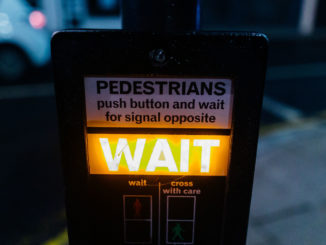
By Doug Parker, Raving Partner and Back of House Systems Lead Auditor, Finley & Cook
Question: Title 31 compliance has presented different challenges over the years. In part, this is because the law and the casino continue to evolve in a lot of different ways. A common theme in the evolution of both is technology. From your perspective, has technology made Title 31 compliance simpler or more difficult?
Technology is such a critical part of our lives today – regardless of the subject matter. I do think the Title 31 laws have done a good job of trying to “keep up with the times,” so to speak. We have seen updates and guidance outlining requirements for heightened cybersecurity, the necessity to include IT personnel in Title 31 training, and even most recently the need to report ransomware demands as suspicious activity. I think we have to assume that financial crime has always, and will always, utilize technology.
All of that considered, it is easy to assume the new risks that accompany new technology make compliance more difficult. That said, what casinos are doing with technology these days is nothing short of incredible. I don’t think that Title 31 compliance is at the top of the list for how we are utilizing technology, though. I will say this: right now, the technological advancements make creating a risk-based compliance program that can be implemented and maintained very difficult; however, I am confident that as the industry continues to embrace technological innovation, it will make compliance easier when it is all said and done.
Question: At the heart of Title 31 compliance is reporting. Knowing what to report, when to report it, and how to report it is typically the essence of Title 31 training. For simplicity sake, let’s break it down into two categories: suspicious activity and currency transactions. Specifically, how does technology address these reporting requirements?
I understand and appreciate that reporting requirements support a common goal: identifying financial crime. However, I think you are in the right mindset to categorize these requirements separately. Reporting suspicious activity is going to involve some serious subjectivity. While there are some activities that would certainly be defined as “suspicious,” there will always be situations that are not black and white.
I love to use the example of a Suspicious Activity Report (SAR) that was filed because a customer wore a long-sleeved shirt in the casino during the summer. I think most people would argue that should not be reported as suspicious activity if that is the only evidence. However, if there was other behavior that needs to be considered, that is where technology could assist. Further, as part of the investigation, casino personnel might use social media or search engines to find out more about individuals. With the supplementary information, a long-sleeved shirt in the summer may become suspicious.
I think the key to consider is that we are using technology to react as it relates to suspicious activity. Currency transaction reporting is a much more defined and objective process. More importantly, we can utilize technology to be proactive. For years, we have used pen and paper to log customer activities, then turn around and determine if it all adds up to a need for a Currency Transaction Report (CTR). Now we can eliminate the pen and paper; we can eliminate the manpower needed to add up those transactions; we can increase our accuracy in logging the activity; we can even store and maintain information more meaningfully to eliminate inconsistencies and inconveniences. Suspicious activity reporting can – and should – leverage technology to become more complete and effective; however, from my perspective, it is the currency transaction reporting that can be revolutionized if technology is implemented and utilized correctly.
Question: There are technologies that have been around for years that – on some level – provide the resources you outlined above as it relates to currency transaction reporting. In your experience, what has kept those from being the solution you’d hope to see.
First of all, most technology is a trial and error adventure. Nothing is guaranteed and we usually cannot know what will work and what needs to be improved until we see it in action. I would not criticize any of the technology and products that we have seen to date, recognizing that they were better than what we had before – which was nothing! But to answer the question, three things jump to the top of my list.
First, cost effectiveness. If a product cost more than what it is saving you, it is probably not worth having. Overall, I think at times we are all guilty of seeing the shiny new product and jumping on board before doing a thorough cost analysis. We should be able to prove we are saving money if we are going to spend on technology.
Secondly, the implementation and ongoing maintenance of a product is critical. This includes the planning that goes into getting up and going, to the audits that take place as the product is being used, and even upgrades and updates to the product over time. If everyone is not clear on their role in making the product launch and ongoing use successful, it seems to fail every single time. The product itself is not necessarily a failure, but getting the desired results is rarely effective.
Finally, I have to mention integration and automation. We live in a data-driven world. We are constantly collecting data in an effort to gain an advantage. Of course, we can also put Title 31 compliance in terms of data. Customer information, trends, and currency activities can all be cross referenced to other systems that are gathering data. As a matter of fact, Title 31 regulations actually require casinos to use all available systems and information to analyze the data that is to be reported. When integration and automation with other systems is present, it does make our lives easier; however, it also presents new risks. If the information being transferred from one system to another is not appropriately audited and evaluated, we risk misinformation – or even worse – no information at all! I am a strong proponent of integration and automation, as I recognize our industry is on the fast track to that being the new norm. I just want to control the risk where we can in the process and eliminate those frustrations I’ve seen over the years where clients were paying for a system that integrated with other systems to capture data, but have been disappointed at audit time when it did not work as expected.
Question: Last question … You’ve been in the casino industry for over two decades. You’ve seen it evolve a lot over the years. When you think about developing a formidable technological solution for Title 31 compliance, what do you think needs to be at the forefront of that product?
Our firm has a Title 31 training presentation titled “Title 31: It’s Not Complicated.” I stand by that. I don’t think Title 31 compliance has to be complicated. I think we make it complicated because we know we have to do it, but it is not generating revenue or bringing and keeping people in the door. Those are the items we – maybe rightfully – focus on. Those are the things that are at the forefront of our team members’ minds. For me, a product to assist with Title 31 compliance has to be part of the team member’s daily routine. It has to be user friendly and easily accessed. It cannot be something we have to go looking for when there is a transaction that meets a certain threshold. Title 31 compliance is supposed to be a part of their job duties; if the product incorporates compliance with their day-to-day duties, it is not complicated at all! This natural integration of “in your face” tasks won’t feel non-routine and makes compliance much easier. It no longer is an afterthought.
Guest Column Contributed by Doug Parker, Raving Partner and Back of House Systems Lead Auditor, Finley & Cook
“I started researching and solidifying my own understanding of Title 31 in 2015, then started teaching and helping clients build their policies. I haven’t looked back since, it seems there have always been and will always be a need for Title 31 work. Each policy has to be based on the risks of the property. A successful Title 31 program clearly identifies and effectively responds to the risks while addressing all the guidance and regulations established by FinCEN. Simplifying the complexity and helping clients get to where they need to be is one of the things I am passionate about.” – Doug Parker



